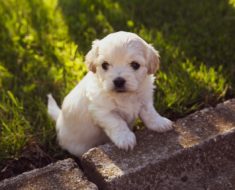
Believe it or not, dog training works with basis of scientific techniques that involve your dog learning to pair a stimuli or a cue with an action. This action offered by your dog could be a behavior it performs. Sometimes, the behavior could pretty much be to stay still, for example, if you wanted your dog to stay or be stationed at one location.
The dog training method that you apply could be as simple as ABC; also known as Antecedent, Behavior and Consequence method or strategy. This strategy could work like this: you extend your palm (antecedent); your puppy dog responds by approaching and placing its jaw on your palm (behavior); and what follows is a positive consequence where you offer a food treat to your puppy. Obviously, your puppy or dog will need to have learned to pair the extended palm with offering the correct or desired behavior; also, your dog needs to have learned that a correct response will result in a positive outcome or consequence.
If you start from the beginning, some steps in etablishing basic training techniques for your dog include:
- Being able to hand-feed your dog with a small amount of food or a treat. The food item is called a primary reinforcer, a fancy way to describe what the dog wants because it needs it.
- Being able to pair a signal or cue (could be a sound from a whistle or clicker) with the food item or treat. Once you have trained your dog to pair the signal or cue; which is sometimes called a secondary reinforcer, you can move on to train simple behaviors such as target training, following or heeling, sit, offer a paw for a handshake and many others.
- The next steps to empower you to communicate with your dog could apply techniques of shaping, which is dog training technique. Puppies are especially fun and it could easily be done like this:
- define what you want the dog to do, in this case, you just want your puppy to approach and touch a ball or easy to hold object
- Take a ball or easy to hold object and show it to your dog; it may look at or even touch it. Once it touches the object, sound the signal (e.g. blow a whistle or click a clicker) and offer it a treat. If your dog does not show interest at first, look out for the smallest sign of interest like a quick look, a head or body movement in the direction of the ball. Reward these small movements or interest to the ball with the signal or cue (whistle or clicker), followed by a small treat. Withdraw or keep the ball behind your back afterwards and repeat the presentation after a short interval of several seconds. Gradually “shape” your dog to get closer and closer to the ball before finally touching it and your behavior is complete.
- Problems? No worries: In case when you have presented the ball and your dog ignores it or does something else, just hide or withdraw the ball for several seconds and present it again afterwards. In the worse case, if after multiple attempts, your dog ignores the ball, try another object. Be patient and keep the training session fun and relaxing for both you and your dog.
- To strengthen this training, you can present the ball at different heights or hold the ball to the left or right. Once your dog learns that:
- (A) whenever the ball is presented, regardless of its location;
- (B) its behavior is to touch the ball with its nose; and
- (C) the consequence is the sound of whistle/clicker, which is followed by a food reward, your dog will have learned to generalize that the target could be presented in any location, but as long as her response is to touch the ball, she will still get the food reward.
- Of course, not responding is also an important and often missed part of the training. If you are merely picking up the ball from the floor or if the ball is just lying there, you would not want your dog to “glue” her nose to the ball even under such circumstances.
- In this example describing how dog training works, we used a ball and where the ball could serve as a target (aka a point of focus for your puppy). Sometimes dog owners or dog trainers could use a small target stick, which is like a little ball glued to the end of a long stick. The target stick is really just a extension of your hand or the “ball” target.
Want secret sauce to this? Instead of a ball, some folks might simply use their open palm or a closed fist to serve as the “target”, no magic formula.
Before you can establish a good foundation in dog training, you need to have developed trust between you and your dog, especially if it is just a puppy.
Understanding how dog training works will enable you to better communicate with your dog. Your dog also learns what to do when you give it a signal, and both you and your dog will strengthen your bond with each other.
Love your dog, train your dog and you will also be able to communicate better with your dog!


